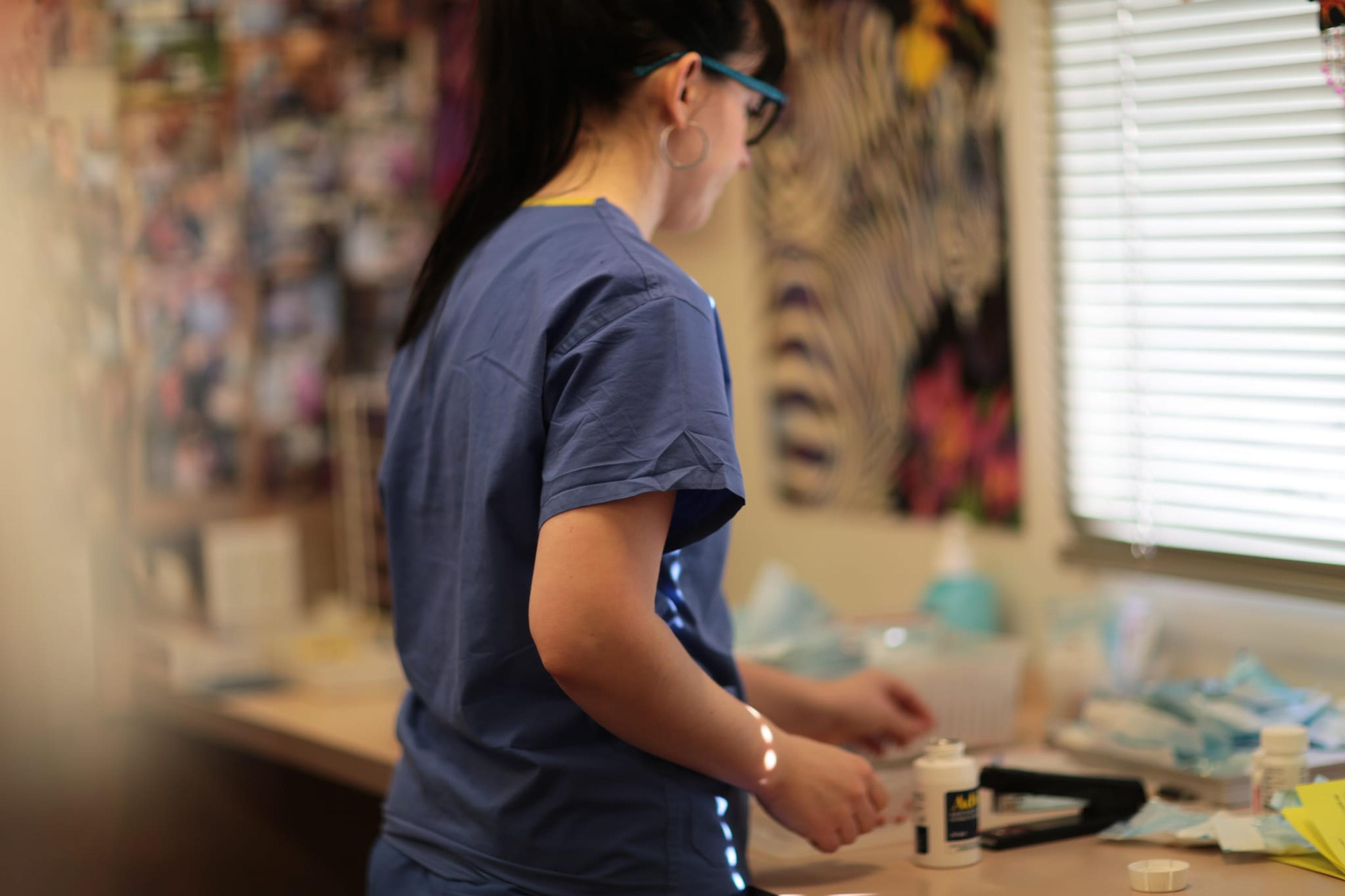BCBSM Foundation Takes on the Nursing Shortage
Kathleen Gardner
| 4 min read

Military paramedics can earn an associate degree in nursing in just 11 months thanks to an innovative partnership between the BCBSM Foundation and Lansing Community College. Meanwhile, Medicaid patients who visit the McAuley Health Center on the east side of Detroit can visit nursing specialists in endocrinology and podiatry because of a Foundation partnership with the University of Detroit Mercy. The programs are just two examples of how the Foundation is leading efforts to ease the chronic nursing shortage in Michigan and the rest of the country. “The Foundation seeks out opportunities to partner with the medical community, Michigan’s universities, public agencies and nonprofits to develop solutions for important health care issues,” said Audrey Harvey, executive director and chief executive officer of the Foundation. “The nursing shortage is certainly one of the most pressing issues we will face in the years ahead.” The BCBSM Foundation began its ongoing support for increasing the number of nurses in 2003, when it sought proposals on how to help ease the shortage. As a result, the Foundation funded two grants. One went to Madonna University to help three Southeast Michigan high schools provide academic support for students thinking about nursing. The other went to Michigan State University for an R.N. refresher course. “For the 11 years I was at MSU, the BCBSM Foundation helped more than 500 nurses return to work through our R.N. refresher course,” said Katie Kessler, former director of professional partnerships for the Michigan State University College of Nursing. “Without the support of the Foundation, we would not have become the premier program in the state.” Nora Maloy, the Foundation’s director of programs, said the R.N. refresher program was particularly valuable because of its flexibility. “Veteran nurses have many reasons for leaving the workforce, whether they have family issues, burnout or other circumstances,” she said. “A key part of this program was Web-based, which allowed nurses across the state to participate more easily, and at their own pace. They were also able to complete their externships close to home, because the program set up opportunities across the state.” The Foundation also worked with the Robert Wood Johnson Foundation and MSU to develop “Nursing for Life.” That program, which has a strong Web component, helps move veteran nurses seeking an alternative to hospital nursing into nursing homes, hospice and ambulatory care facilities. Maloy also is on the steering committee for the Michigan Center for Nursing. Among other goals, the center is working to encourage more nurses to consider teaching. The Foundation’s efforts are making a real difference in easing the nursing shortage, according to Jeanette Klemczak, former Michigan Chief Nurse Executive. “I see the framework for the Foundation's support for nursing projects as a consistent investment in infrastructure, such as innovative educational curricula,” she said. “These investments contribute to a continuous educational pipeline for the workforce needs of communities.” What’s behind the nursing shortage? We’ve had a chronic shortage of nurses in the U.S. for decades. But the problem is about to get worse, suggests a recent article in The Atlantic. “Due to an aging population, the rising incidence of chronic disease, an aging nursing workforce, and the limited capacity of nursing schools, this shortage is on the cusp of becoming a crisis, one with worrying implications for patients and health-care providers alike,” author Rebecca Grant wrote in the Feb. 3 issue. Some trends to watch:
- Although the U.S. has 3 million nurses, demand is outpacing supply.
- More than a million job openings for nurses are expected by 2022.
- Between 2010 and 2030, the number of Americans 65 and older will increase by 75 percent, to 69 million. That’s one in five Americans.
- About 80 percent of older adults have at least one chronic condition, and 68 percent have at least two.
- More than half a million nurses are expected to retire by 2022.
Although 158,000 new nursing grads entered the workforce in 2014, nursing schools turned away nearly 80,000 applicants for undergraduate and graduate programs due to lack of faculty, clinical sites, classroom space and other factors. The Blue Cross Blue Shield of Michigan Foundation supports research and programs to improve the health of Michigan residents. No grant money comes from the premium payments of Blue Cross Blue Shield of Michigan members. To learn more about BCBSM Foundation grant programs, visit bcbsm.com/foundation. Photo Credit: Compassion Connect





